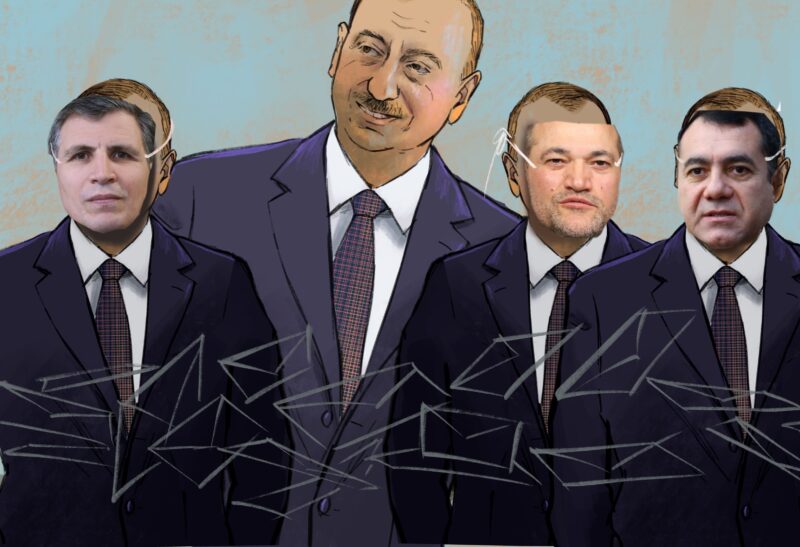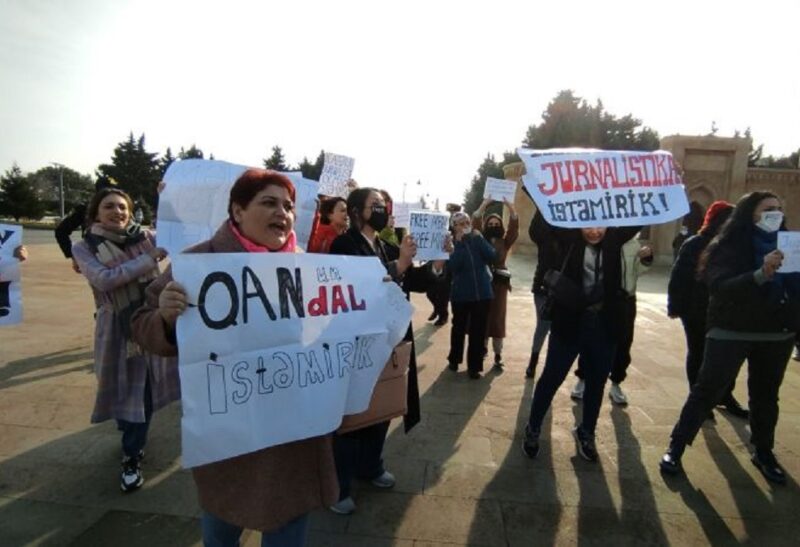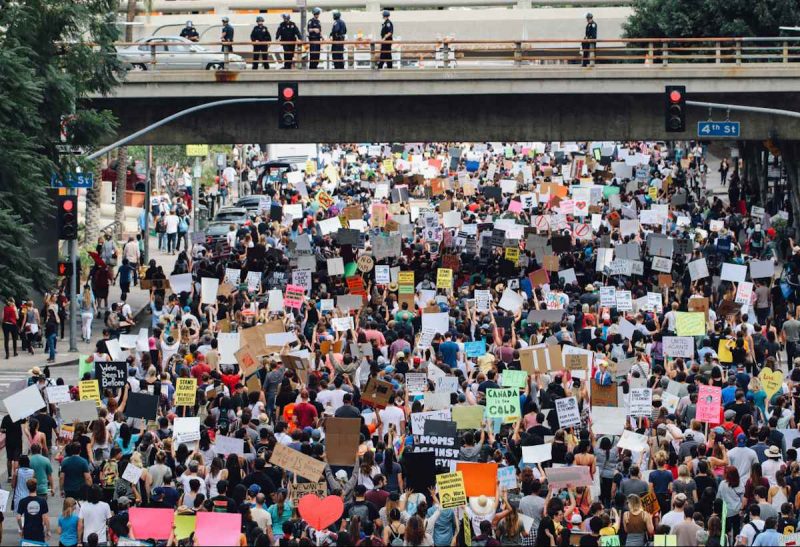On January 17 seven-year-old Sevil returned from her school in Surakhani, Baku suburbs, terrified. She wasn’t herself the whole day and couldn’t sleep at night, her mother Nurlana Sadikhova said. Sevil’s school had a presentation on the tragic events of January 20, 1990, after which children were offered to draw pictures of what they saw: dead people, blood, red carnations, crying people.
“Sevil was shocked, because we have never talked to her about violence and death before, she was terrified. It is important that she knows of our history and what our people had gone through, but I wish there was a better way to talk about tragedies with young children,” Sadikhova said.
January 20, 1990
, otherwise called as “Black January,” is one of the darkest pages in Azerbaijan’s modern history. On that day, Soviet Union troops entered Baku to suppress political opposition to the USSR. Quickly the city was turned into a battle zone, and at least 130 citizens and 21 soldiers were killed. Today 30-year-old Sadikhova, who said, she witnessed the tragedy as a child, said she wanted her daughter to know what Azerbaijan had gone through, but she wished everything was done at a proper time, proper age and, perhaps, in a better way.
How do we talk to children about tragedies in Azerbaijan?
Sadikhova said she attended the same elementary school as her daughter, but that neither her, nor Sevil have ever heard of any specific approaches to talking about tragedies.
“January 20,
Khojaly
,
May 8
,
May 9
,
March 31
and a few other dates… Those are the dates when children are told horrible stories of deaths and violence. Yes, those stories are true, but I wish that children’s psychological reaction was taken into consideration as well,” she said.
Shakhla Veliyeva, a child psychologist at a school in Bakinskii Rabochi District in Baku suburbs, said her school had a few events dedicated to January 20 and Khojaly tragedies every year.
“Our school showed a movie on January 16. And on January 17 teachers talked to children about the tragedy and asked them to rise in a moment of silence to remember the dead. We don’t really have any specific strategy how to talk to children about these things. It’s not a bad idea, but as long as there hasn’t been an order from the Ministry of Education, we can’t change things around,” she said.
Ministry of Education
was not available for comment at the time of the report.
Veliyeva said that she had seen some children cry when looking at the pictures of the victims, but “that doesn’t mean we shouldn’t talk about these events or ask children to draw pictures of tanks and dead people. These people were victims, they are our shaheeds (martyrs), and it’s our duty to remember them.”
Violence leads to more violence
Scientific research
shows that children exposed to violence, even if they aren’t directly involved in it, are affected much stronger than adults realize. According to a study,
published in Science Daily
in 2011, the more children see violence, the more it seems normal to them, and as a result, they become more violent.
American Psychologist Association researched
the results of children’s exposure to violent content on TV
, and has suggested that children that get exposed to violence on TV may become less sensitive to pain and are more likely to behave in a more violent way.
International experience
Jeanette Friedman, Communications Director at International Study Organized Persecution of Children, which focuses primarily on recovery from trauma of children and treatment of psychological effects of the Holocaust on survivors and descendants, said a lot depended on how old the children were.
“We believe that children under the age 13 should be taught the values we learn from the tragedy–which is that all people are created the same, they are all human beings, and that we must care about them and care about what goes on in the world. We should also be teaching them to think critically. When it comes to the tragedy itself, you begin in middle school, where the children are taught the history of the event, and that is later supplemented with eye witness testimonies from those who survived. There are stages of mourning denial, anger and a search for meaning that takes place in this process especially if the children are direct descendants of the victims,” she said.
Shoshana Shapiro Adler, Ph.D., children’s psychoanalyst from Greenwood Village, Colorado, who specializes in providing psychoanalysis to children with behavioral and emotional concerns, said besides the age, a lot depended on children’s “proximity to the events (i.e., is it something in history, or something that happened in their neighborhood today), and the reactions of their parents and the adults around them.”
She recommended that parents and teachers look at the following websites to learn how to better explain these kinds of tragedies to children:
MayoClinic
,
PBS
and
FredRodgers
.
“Also, in terms of providing more detailed information about tragic historical events, especially those that can be emotionally upsetting, early adolescence, ages 13 and up, seems to be the time when children are taught more fully in the school curriculum,” Adler said.
Friedman explained how tragic issues could be approached at different stages.
“In early grades one teaches values of tolerance, via stories like Dumbo the Elephant and other parables that teach children to respect each other regardless of religion or ethnicity. You also teach them how to think critically, and why, even it is may sometimes be scary and even dangerous, to speak out against injustice and be aware of the world around them. In middle school 8 grade and up, you start with the history of the event, the political and economic factors, the basic time line of the event and other events that could be regarded as similar”.
She said it was in high school when children actually met some of the survivors and learned about tragedies in more detail.
Safety and tolerance are the most important
Catherine Stevens, elementary school teacher in Manassas, Virginia, who said schools played an important role in making sure children’s questions regarding tragedies of international, national or local scale are addressed, added that the media and TV in particular, also had an influence on children.
It’s not just children, it’s any person. For example, when I first saw the images of burning Twin Towers on September 11 on TV, I was shaking and crying. Being originally from New York I still burst into tears when I see those images again. With children, who are even more emotional, it could be even more traumatic. Therefore we should be careful”.
In 2012 American Mother Jones Magazine in an article
“How to talk to kids about Newtown”
cited research that indicated that those children, who watched more news coverage of tragic events, felt more vulnerable.
Stevens said, in such it was important that children knew they were safe and that the adults around them would take care of them.
“After
the shooting at Sandy Hook in 2012
, for example, me and my colleagues, for example, rather than talking to children about the killings, focused on explaining children that they were safe and what they should do, if there was any danger. We also made sure that children had a chance to ask questions rather than just filling them up with information that they maybe didn’t need at that age,” Stevens said.
Back in Baku Sadikhova said she thought another important thing to teach a child when talking about tragic events, such as January 20, was that tolerance was vital.
“Our country likes to boast of tolerance, so maybe when talking to our children about January 20 we could also talk about tolerance. For example, I’m going to tell my daughter that tragedies like these teach us about the importance of respect towards all people and the importance of peace,” she said.



